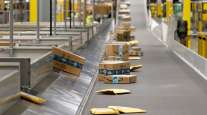Economy Picks Up on Consumer Spending, Construction

The world’s largest economy expanded more than previously forecast in the second quarter, boosted by gains in consumer spending and construction that may help the United States withstand a global slowdown
Gross domestic product rose at a 3.9% annualized rate compared with a prior estimate of 3.7%, Commerce Department figures showed Sept. 25. The median forecast of 76 economists surveyed by Bloomberg News called for a 3.7% gain.
Strong hiring, cheaper gasoline and higher home prices probably will sustain household purchases, which account for about 70% of the economy. That helps bolster Federal Reserve Chair Janet Yellen’s view that the United States will overcome any fallout from cooling overseas markets and swings in global financial and commodity markets.
“Consumer demand is running at a healthy pace, driven by job and income growth,” Guy Lebas, chief fixed-income strategist at Janney Montgomery Scott in Philadelphia, said before the report. “The expansion continues in 2015.”
Economists’ forecasts for GDP, the value of all goods and services produced, ranged from 2.7% to 4.1%.
The upward revision was driven mainly by a bigger pickup in consumer spending and business investment in commercial and residential construction.
The economy rebounded last quarter after growing at a 0.6% pace from January through March amid harsh winter weather, a labor dispute at West Coast ports and a pullback in energy-industry investment after the plunge in oil prices.
The latest estimate is the third for the quarter, and the reading won’t be updated again until annual revisions are issued in July.
Household consumption was revised to a 3.6% gain compared with an initial estimate of 3.1% and followed a 1.8% advance from January through March. The Bloomberg survey median called for a second-quarter advance of 3.2%.
A strong job market and cheap gasoline are sustaining the momentum in spending this quarter, helping to boost housing and autos. Industry data showed sales of cars and light trucks climbed in August to the highest level in a decade.
Among other details, business investment climbed at a 5.2% annualized pace compared with a prior estimate of 4.1%. Investment in nonresidential structures, including office buildings and factories, rose 6.2%, the most in more than a year.
Residential construction increased at a 9.3% rate, up from a previous estimate of 7.8%.
Corporate spending on equipment and software eked out a tiny gain last quarter, and recent data indicate it could pick up this quarter.
Last quarter’s growth reading was at odds with data on earnings. Gross domestic income, which reflects all the money earned by consumers, businesses and government agencies climbed at a 0.7% annualized rate. It climbed 0.4% in the first quarter, marking the weakest back-to-back gains since mid-2012.
Although GDP and GDI should theoretically match, they can diverge in the short run because they are derived from different sources. For that reason, the government began issuing a new measure tracking the average of the two, which showed a 2.3% gain after a 0.5% advance in the first three months of the year.
Another bright spot last quarter was government spending, which climbed at a 2.6% pace, led by the biggest gain in state and local agency outlays since 2001.
The biggest obstacle for the economy this quarter is the need to reduce bloated inventories. Stockpiles in the first two quarters of the year showed the biggest back-to-back gain since records began in 1947.
The need to cut stocks is the main reason economists project growth will slow this quarter. GDP is forecast to expand at a 2.4% rate, according to the median forecast of economists surveyed by Bloomberg from Sept. 4 to Sept. 9.
Yellen said Sept. 24 that she is ready to raise interest rates this year and intends to let the labor market run hot for a time to heal the lingering scars of the worst recession since the Great Depression.
She also said officials are confident the economy will keep expanding.
Policymakers are “monitoring developments abroad, but we do not currently anticipate that the effects of these recent developments on the U.S. economy will prove to be large enough to have a significant effect on the path for policy,” she said in a speech in Amherst, Massachusetts.




